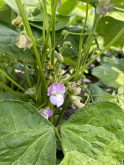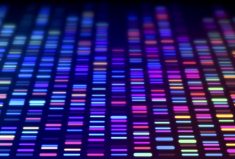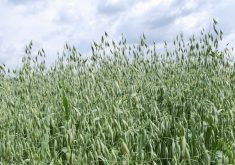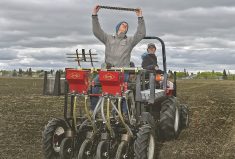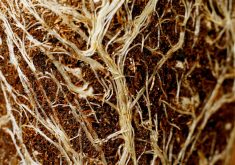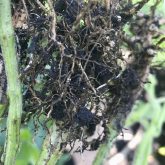Genetic manipulations such as RNAi silencing and CRISPR are helping researchers and plant breeders enhance traits and characteristics.
The genomic mapping of corn, soybean, wheat and oat creates more opportunities to improve plant growth and desired properties in those crops.
Why it matters: Epigenetics could give plant breeders the ability to make crops more resilient to environmental stressors more quickly without sacrificing yield.
Read Also

The forced Japanese-Canadian farmers of the Second World War
Manitoba’s sugar beet farms drew on displaced Japanese-Canadians from B.C. during the Second World War
But what could be accomplished if researchers could effectively “read the minds” of plants and gauge their inherent abilities to respond to stresses around them?
That’s the goal of Sally Mackenzie and her team of researchers with EpiCrop Technologies, a pipeline for commercial deployment of epigenetic improvements in crops.
Rather than altering the genetic code itself, epigenetics studies the changes in organisms caused by modification of gene expression.
Epigenetics is a relatively new arrival in crop breeding. Mackenzie and colleagues made a discovery in the field in 2012. The difference from other plant breeding work is that it has no effect on the genetic structure of a plant.
In 2019, Mackenzie addressed a panel at the United States Department of Agriculture’s Animal and Plant Health Inspection Services. Members asked for clarification on what epigenetics entails. After two hours of discussion and questions, the panelists determined there was nothing they could regulate, because epigenetic changes in plants already occur naturally. It’s something plants do themselves, all the time.
“Of particular interest is that our efforts (since 2019) have led to a new technology we call EpiMethyl Analytics,” says Mackenzie, a professor of biology and plant science at Pennsylvania State University.
“It’s a method of decoding changes in DNA methylation that occur as the plant responds to its environment, participates in hybrid vigour or produces a trait with a strong genotype by environment effects. In this way, we reveal the genes that underlie traits like drought, heat or cold tolerance.”

Deeper than DNA
Much of the work in plant breeding has centred on the hard-wired effects of genetics on plants. But Mackenzie’s work with epigenetics tries to understand how a crop expresses those genes and how the system is altered during environmental changes.
In a controlled manner, she and her team can epigenetically reprogram plants and then use the altered plants in grafts or crossing. Cross that plant to a wild-type plant or graft it as a rootstock with a normal wild-type, and the progeny will be enhanced in growth, vigour, yield and resilience.
Genetically, nothing has changed in the plant, only the mechanism for how it reacts has been altered. The potential is extraordinary. Not only would growers benefit but this new branch of science could quell consumer and export concerns about genetic modifications and even enhance trade.
“Now, imagine a new pipeline where current companies are putting out the very best variety they have, and it goes into this epigenetic pipeline and comes out the other end with the same combination of genes,” says Mackenzie.
“Now you’ve epigenetically modified it to be more resilient, to be more vigorous and to put out more yield. So ‘elite variety in and supercharged variety out’ is the process we envision, where epigenetic value can be captured in a new version of crop breeding.”
Learning more
That’s one approach to using epigenetics and it’s applicable to corn, soybeans, canola and other crops. But the component of particular interest to Mackenzie is called DNA methylation, using epigenetic changes to learn more about how plants adjust their growth patterns in response to the environment and to discover the underlying gene pathways.
“When we think about DNA, we think about a gene sequence and it’s those bases in a particular sequence that tell you what gene you’re looking at,” she adds.
The bases are the nucleic acids identified as ‘ATCG’ (adenine, thymine, cytosine and guanine). “The base order is vital because it tells you what the gene is and what it can do.”
In epigenetics, that same functional decoding had never been done and now Mackenzie’s team is working with DNA methylation to unravel changes in their patterns. They’ve learned that when a plant is under some form of environmental stress – drought or cold – it’s possible to determine the changes in DNA methylation that have occurred and which gene networks are responsive to the environmental effect.
This system provides the opportunity to decode the way a plant co-ordinates its gene action to respond to its environment.
It’s a glimpse into a plant’s growth behaviour under duress but it also provides the opportunity for gene discovery, since researchers are examining the specific genes that detect stress and respond to it.
“The reason it’s important is that right now the challenge is to devise faster, more efficient ways to breed for resilience,” says Mackenzie, citing the 2022 drought in North Dakota, where canola growers suffered huge losses.
“If we understand more about how to breed for effective drought resilience by learning the genes that are necessary, it gives us a way to rapidly identify and incorporate better, more nimble sources of resilience. We’d get there much faster because we’re no longer breeding blind.”
She maintains much of the yield increase in different crops in the past 20 years has occurred more as a result of increased planting densities and improved cultivation.
Herbicide- and insect-tolerances have had their benefits, and hybrids with enhanced vigour have had impact, but there hasn’t been a specific understanding of what’s happening at the genetic level.
That’s changing with epigenetics. Decoding systems like the one Mackenzie and her lab are developing unlocks that secret to how plants partition their energy for growth.
Complex learning
The discovery of gene networks has been another epiphany in genetics and plant breeding. Researchers now understand that it isn’t a single gene that’s responsible for desired characteristics.
Transgenic traits like herbicide tolerance are implemented by the addition of single genes, but naturally occurring plant traits aren’t the product of individual gene activity. They involve entire gene pathways.
There may be 10, 20 or 30 genes involved in things like yield or pathogen tolerance. By understanding how a new gene pathway or gene network operates, and adjusting its function accordingly, altering resilience shouldn’t cause a yield hit, as was the case with the first glyphosate-tolerant varieties in the mid-1990s.
“We can bring a variety in and introduce the epigenetic change, but by putting the plant under drought while creating that epigenetic change, we give the grower a boost in the direction they want,” says Mackenzie.
“The whole idea of ‘designer’ breeding is the premise of epigenetics.”
Mackenzie and her team of researchers aren’t looking at a specific trait for something like drought or cold tolerance. The search is for a process by which the plant adjusts to those specific stresses or specific conditions.
Soybeans a target
Five years ago, Mackenzie’s work leaned more to soybeans, canola and tomatoes. She found dicot species were amenable to grafting for introducing epigenetic variation and then harvesting the seed from the resulting graft combination.
So far, EpiCrop Technologies efforts have increased yield in soybeans by five to 14 per cent, with the epigenetic effect lasting at least four generations.
Mackenzie believes those changes will last longer with recent improvements to methodology and she emphasizes the data on the EpiCrop website represent actual percentage increases based on multi-location field data.
“We’re not reporting anything until we’ve grown large-scale field experiments,” she adds. “While we’re doing those experiments, we’re back refining the rootstock selection process to improve performance and target outcomes.”
Cross-country adaptability
With such designer breeding through epigenetics and DNA methylation, Mackenzie believes it would be possible to customize various crops according to regional conditions.
Drought may be an issue on the Great Plains or the Canadian Prairies, but for the Great Lakes Basin, water-logging might be a focal point. Conventional breeding may not be able to adapt quickly enough, but epigenetics can.
“I see this as breeding for plasticity,” says Mackenzie. “We’re just breeding for a crop’s ability to adjust and pivot in response to its environment, and create yield stability.”






